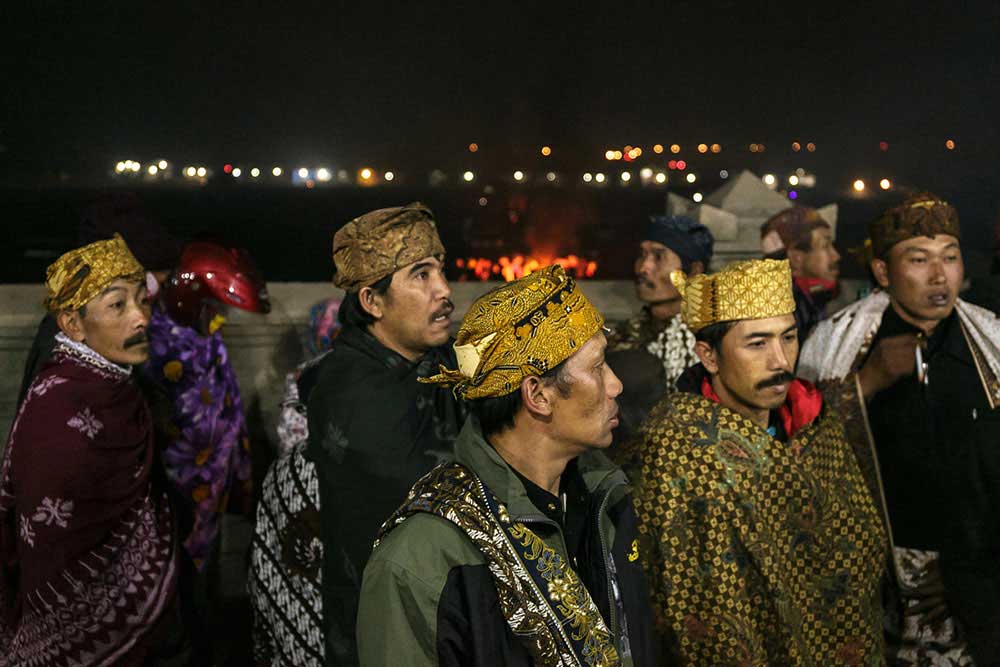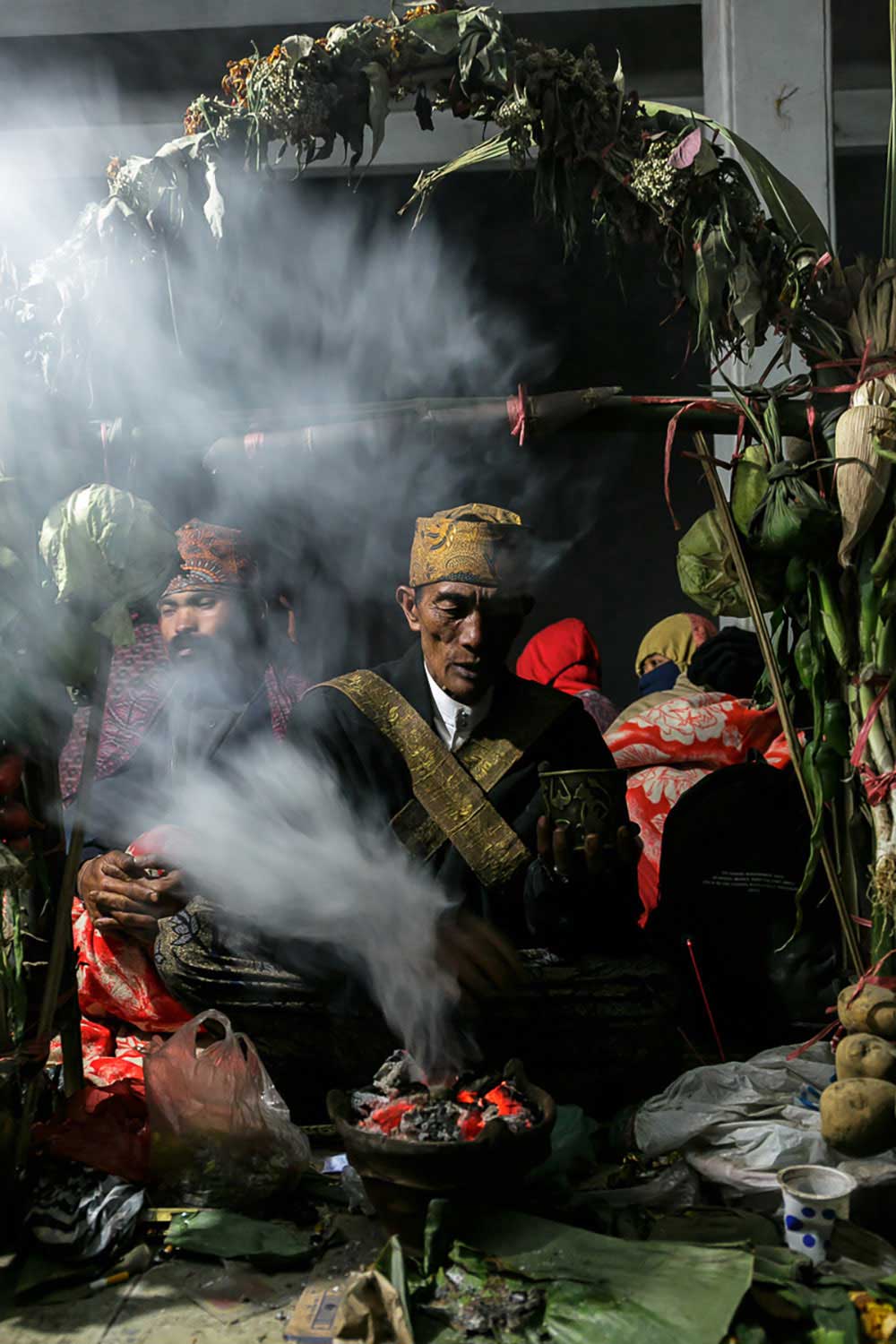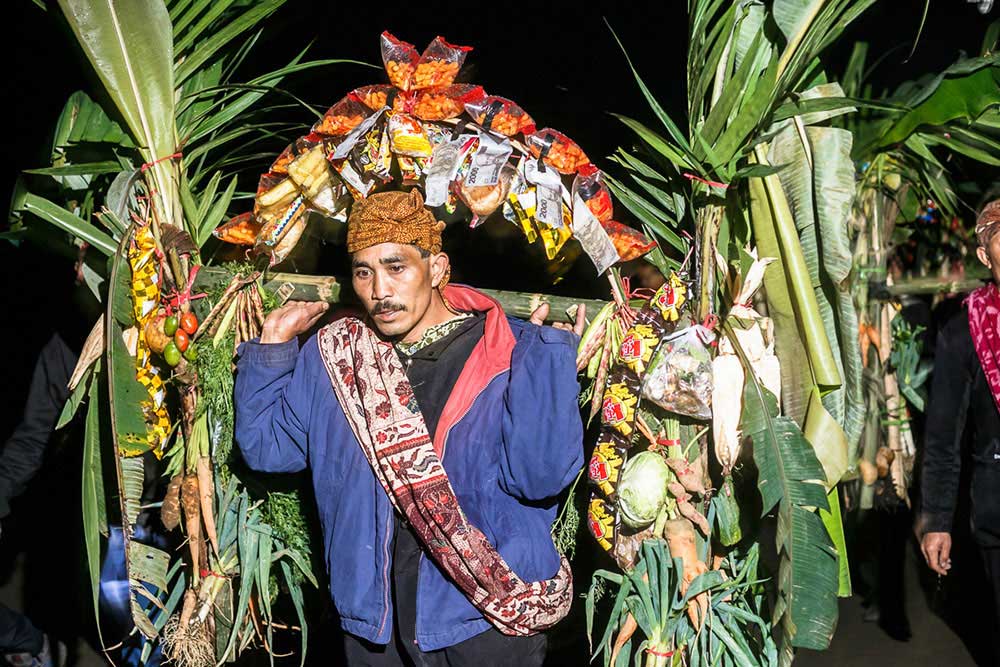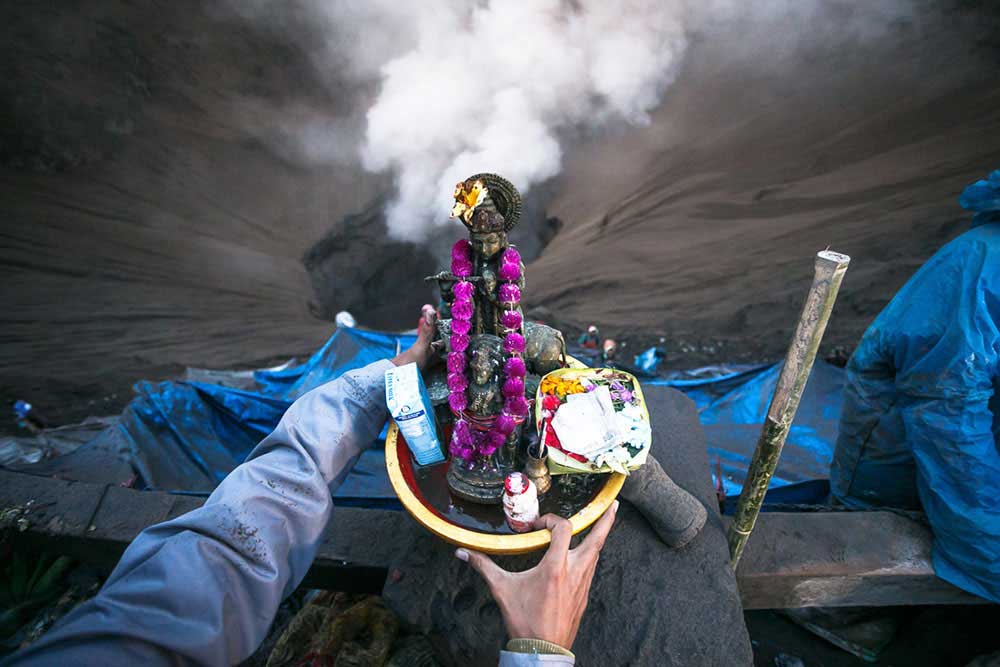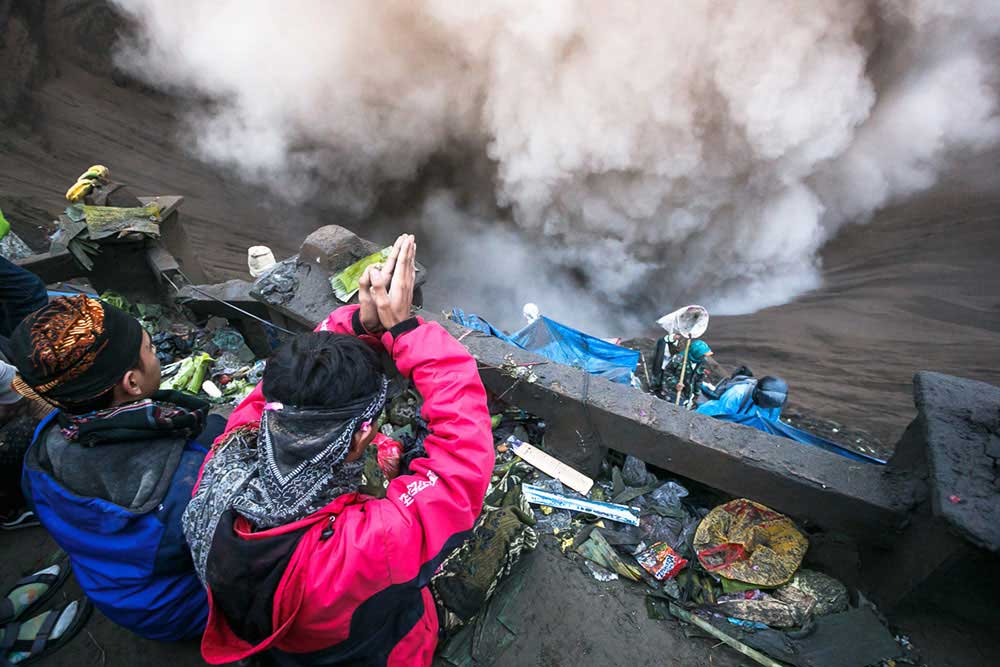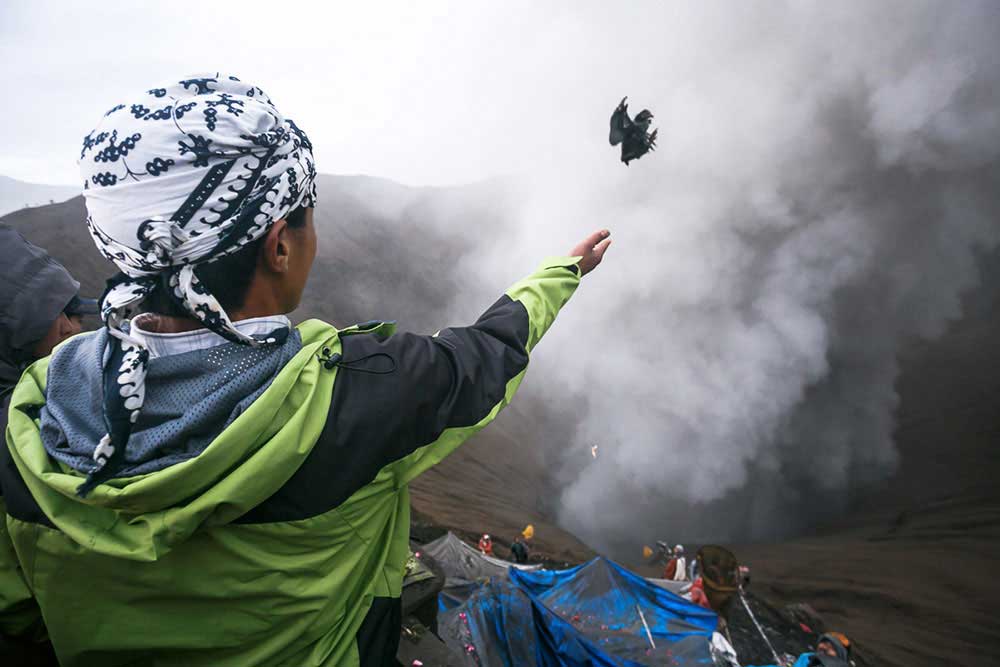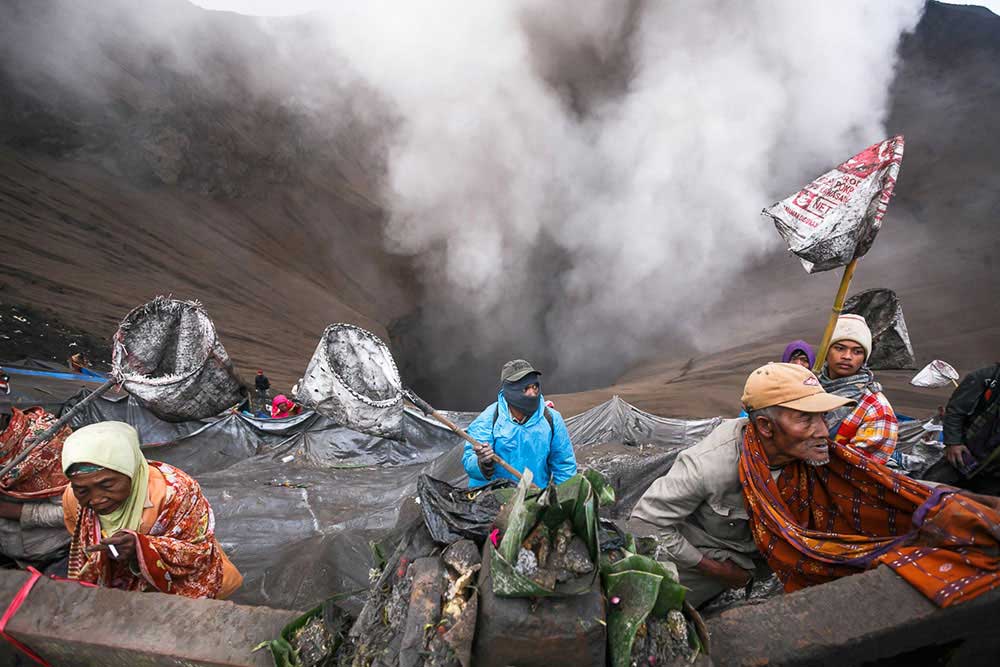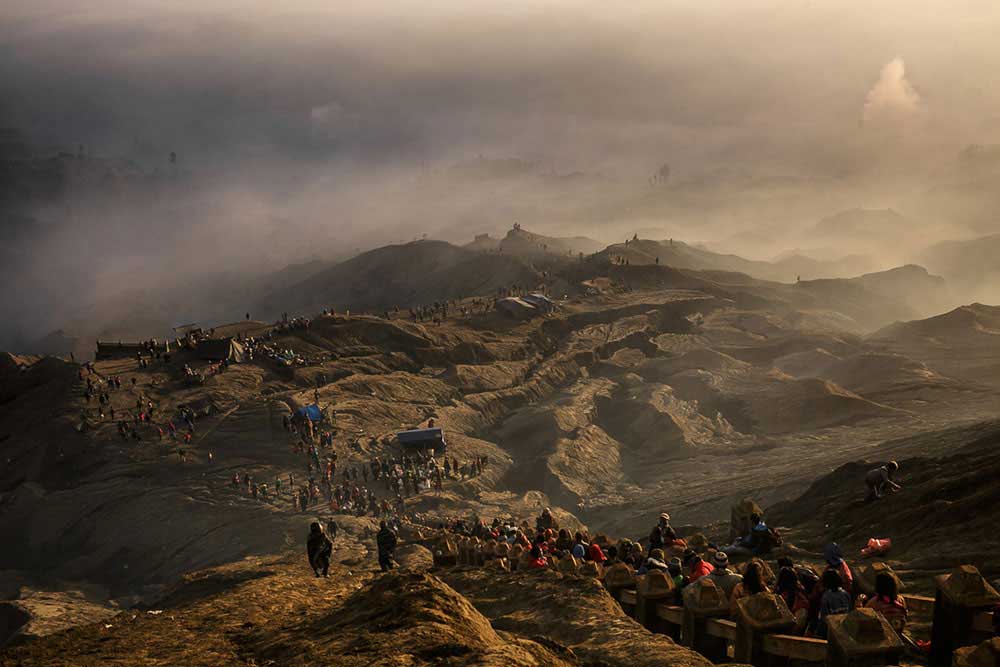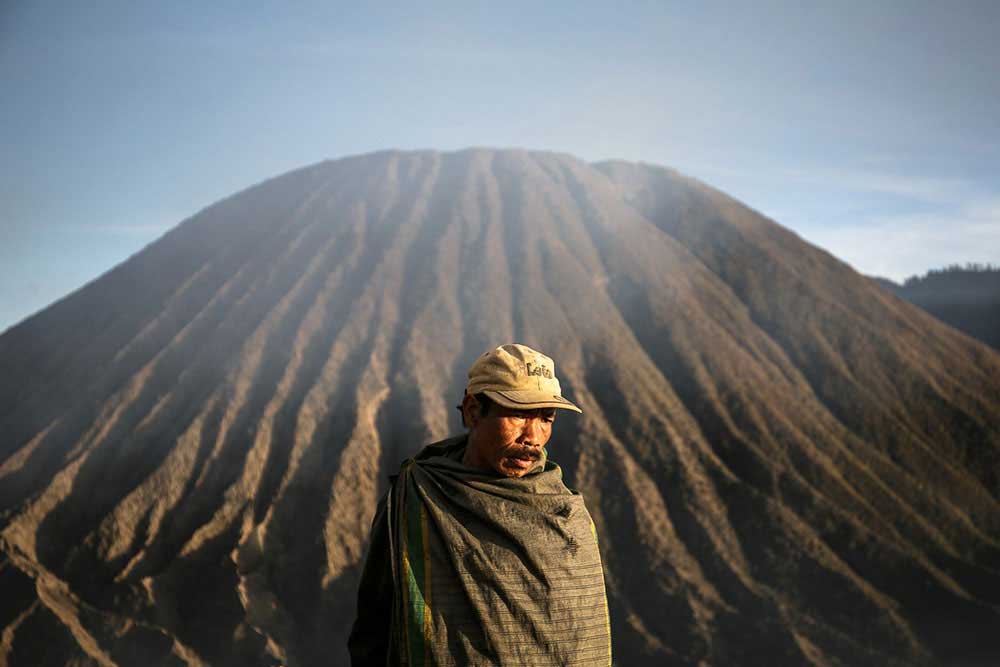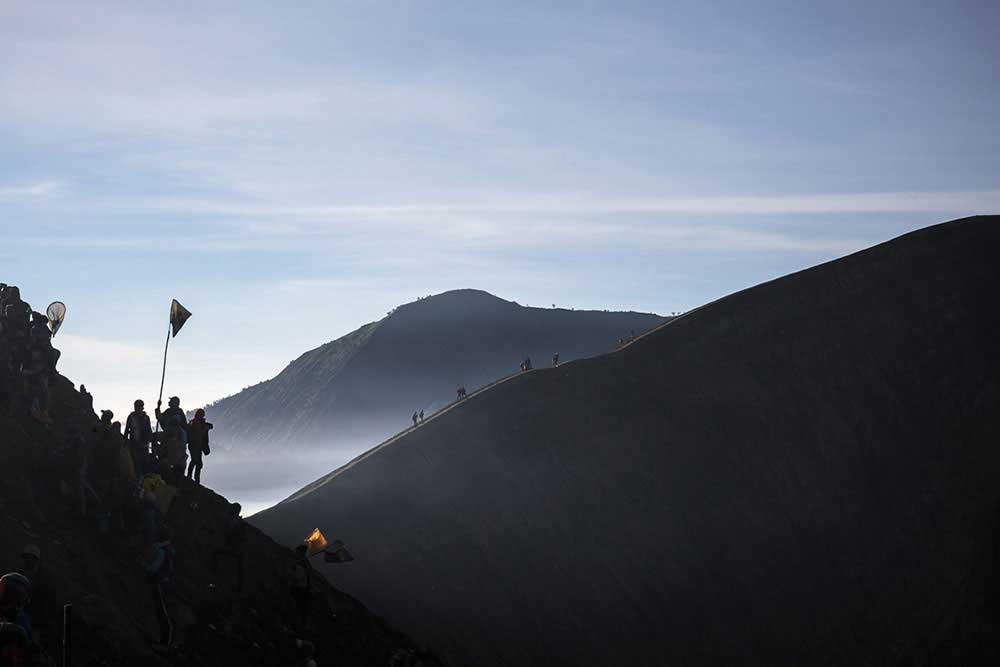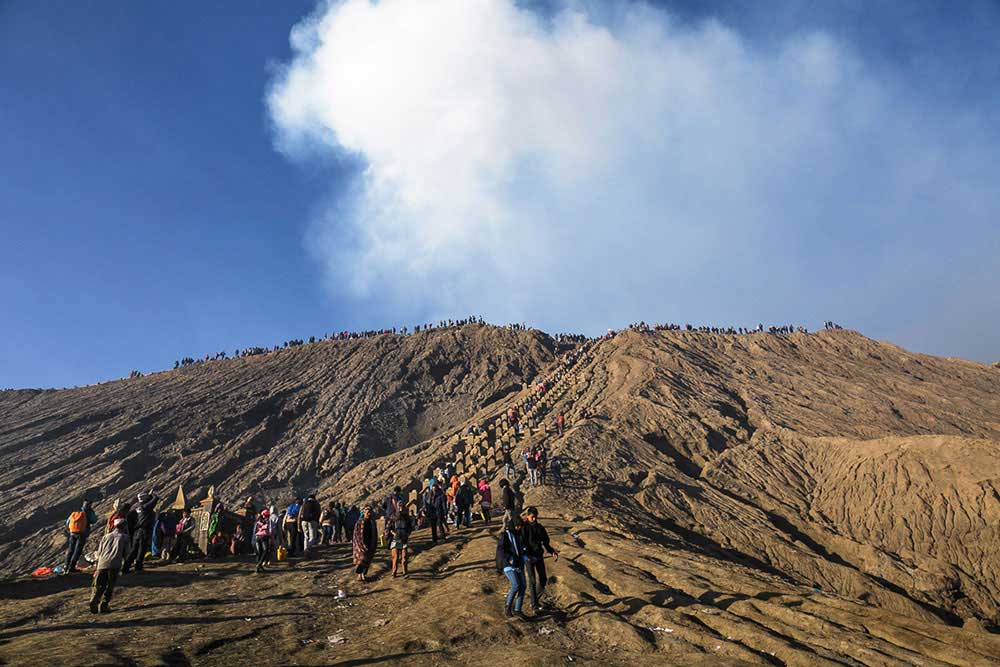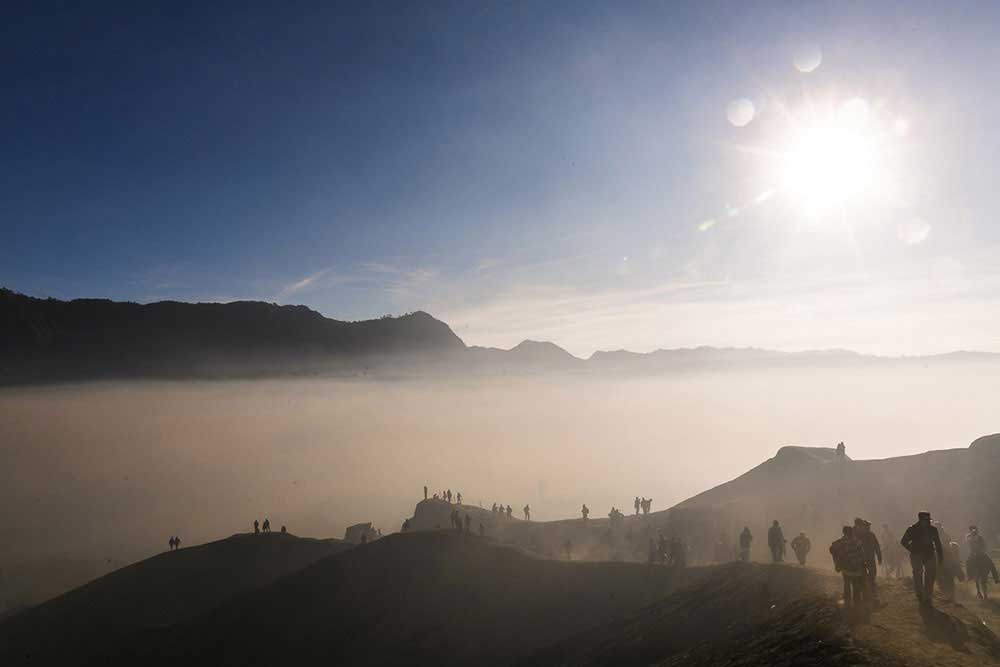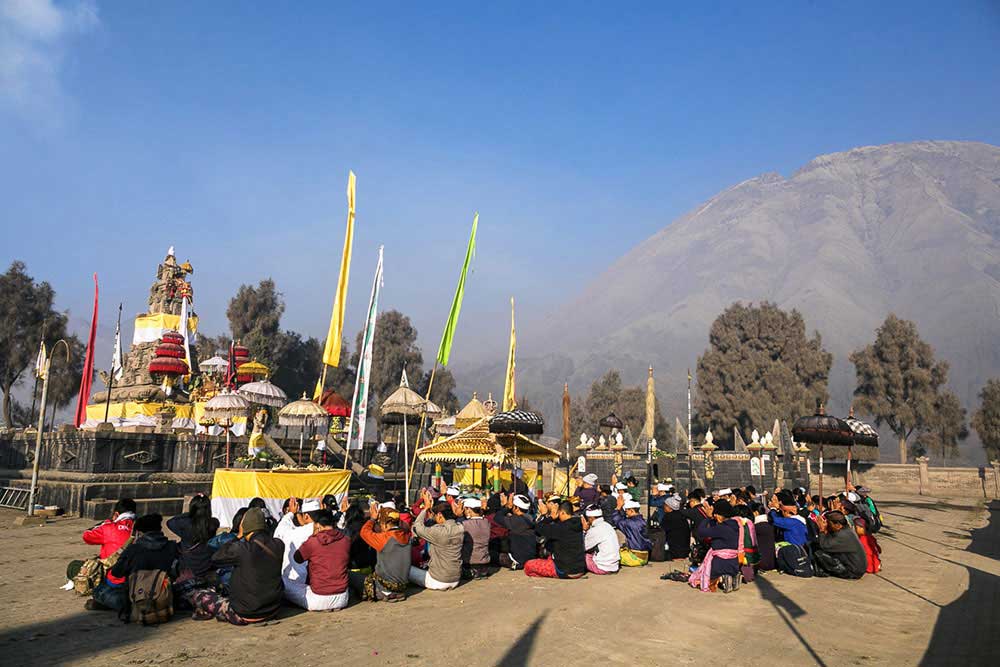Witnessing Yadnya Kasada, a centuries-old tradition of the Tengger Tribe in Mount Bromo, East Java…
On the 14th day of the month of Kasada (a Tengger Tribe’s calendar) during Full Moon, all the Hindu people who live at the foot of Mount Bromo in East Java gather to celebrate the Yadnya Kasada ceremony, an ancient ritual that has been passed down from generation to generation. The ritual is compulsory for the Tengger Tribe as a symbol of worship and being grateful to Sang Hyang Widhi (God).
According to the Javanese people who still hold on to their ‘kejawen’ principles – kejawen is an ancient Javanese belief –, the mountains are sacred areas where their God and the soul of their ancestors reside. The Tengger Tribe shares the same ancestors with the Javanese, and they believe that Mount Bromo is the supreme symbol of the Sang Hyang Widhi’s throne. Located in Probolinggo region, Mount Bromo has become a sacred place to worship their God and ancestors.
How it all Began
According to local folklore, the Yadnya Kasada is a tradition to seek safety and prosperity from Sang Hyang Widhi. The ritual has been held for centuries, since the first day humans occupied the foot of Mount Bromo to be exact.
Another folklore also mentions that towards to the fall of the Majapahit Kingdom with Prabu Brawijaya V sitting on the throne in the 16th century, lived a princess named Dewi Rara Anteng. She was the daughter of one of the king’s concubines. Wars happened in Trowulan, the capital city of Majapahit Kingdom, which led to a huge exodus. Most of the Majapahit people moved to the eastern areas, like Blambangan (Banyuwangi) area, Bali and Lombok.
However, Dewi Rara Anteng together with her husband (Raden Jaka Seger) and their guards and followers took a different route. They ran to the foot of Mount Bromo. Once they came to safety, Dewi Rara Anteng and Raden Jaka Seger started a new life there together with all of the people who followed them. The couple ruled the Tengger region, and achieved the title “Purbowasesa Mangkurat Ing Tengger” which means “the kind ruler of Tengger”. The Tengger region’s name is derived from the names of the conquerors, Dewi Rara Anteng (Teng) and Raden Jaka Seger (Ger).
Dewi Rara Anteng and Raden Jaka Seger lived happily with their people. The foot of Mount Bromo was a fertile land where harvests grew abundantly. However, after years of living in peace, the couple hadn’t had any children yet. Thus, they meditated on the top of Mount Bromo (Brahma), right at the edge of the crater.
When midnight came, Dewi Rara Anteng and Raden Jaka Seger heard whispers, saying that their wish would come true with one condition; they would have to give up their last born to the crater of Mount Bromo. The couple agreed, and they finally got children – 25 children to be exact. The last born was named Raden Hadi Kusuma. He was the one to be sacrificed, yet he grew up to be a strong man.
Dewi Rara Anteng and Raden Jaka Seger didn’t have the heart to give Raden Hadi Kusuma up. They broke their promise, and it made the God angry. One day, the sky above the Tengger region turned dark and Mount Bromo exploded. Raden Hadi Kusuma disappeared into the fire and was sucked into the crater of Mount Bromo. When the tragedy happened, a voice similar to that of Raden Hadi Kusuma’s resonated, saying that he had been sacrificed for the safety of all Tengger people. The voice also reminded the people to always worship Sang Hyang Widhi and that they have to sacrifice farm animals and harvests on the 14thday of the month of Kasada.That was the beginning of Yadnya Kasada ritual of Tengger people in Mount Bromo. A ritual that is still performed until today.
Edge of the Crater
The Yadnya Kasada ritual started with local priests – who were handselected by senior priests through a traditional meeting – chanting some prayers. Afterwards, the Tengger people brought ongkek (offerings) up to the top of Mount Bromo – the offering consisted of harvests, some money and farm animals, all are given up to the crater of Mount Bromo. This procession is the peak of the Yadnya Kasada ceremony that takes place on the edge of the crater. A day prior to this ceremony, the people send up some prayers in temples and collect holy water from a cage in Mount Widodaren, not far from Mount Bromo.
The Tengger people believe that the Yadnya Kasada ritual will keep them safe from catastrophe and give them prosperity with abundant farm animals and harvests. This ritual is not only a symbol of protection and gratefulness to Sang Hyang Widhi, but also a tribute to Raden Hadi Kusuma and his other 24 siblings from Dewi Rara Anteng and Raden Jaka Seger, as the family is the ancestors of the Tengger Tribe.
About Reza Fitriyanto
Hi, my name is Reza Fitriyanto. I am an Indonesia-based Travel & Documentary Photographer and currently live in the heart city of Java Island : Yogyakarta. My projects are focusing on human life and their interaction with culture and nature. I love to travel after I learn photography. For me, travel and photography are the best way to learn, share, and see the world. Without sharing, it’s all nothing, because sharing is caring. [Official Website]



